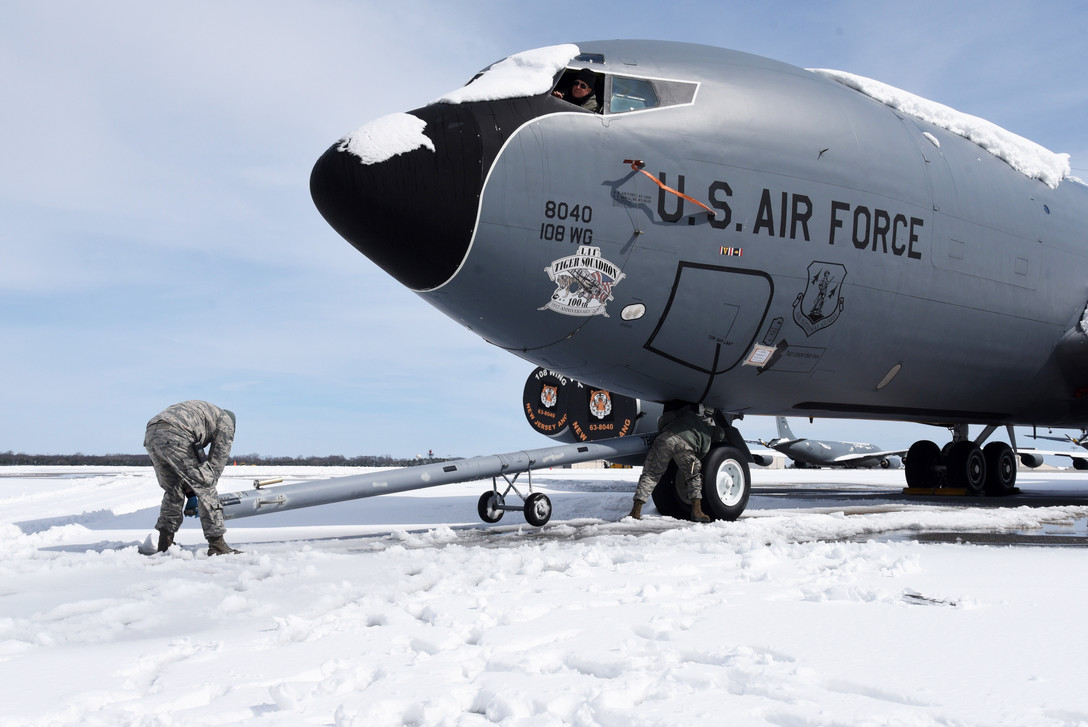
As the natural environment for an aircraft is the atmosphere, meteorology is a major variable in aviation safety management. The airline industry recognized meteorology as a main contributing threat in 31% of aircraft accidents for the 2012-2016 period. This figure climbs to 43% when considering fatal accidents only [1]. One particular threat is aircraft icing.
Icing conditions are defined as the presence of supercooled water in the atmosphere [2]. On impact with an aircraft, these droplets create ice on the exposed surfaces. Especially dangerous is the encounter with supercooled large droplets (SLD), as they can run on unprotected surfaces before icing. Aviation faced the risk of icing many years before reliable meteorology forecasts were possible, so the industry tackled the problem with a brute-force defense. On-board de-ice and anti-ice systems are present on every commercial aircraft nowadays, but icing forecasts remain faulty and unreliable. Computerized meteorology models usually underestimate the presence of supercooled water and overestimate solid state water, thus icing conditions and SLD concentration forecasts are far from perfect [3].
Supercooled water is most frequent between 0ºC and -15ºC due to low ice nuclei concentration, nucleation efficiency, and activation temperature [3]. SLDs also require intense vertical currents and wind shear [4, 5]. This makes cumulonimbus and mountain wave clouds especially prone to create icing conditions [6].
An aircraft icing case study is analyzed to study possible short-term and nowcasting forecasting tools. Data used was taken by one of the authors during a commercial flight on February 28th, 2017 at 16:45 UTC over the Guadarrama Mountain Range, near Madrid, Spain. Approaching Madrid-Barajas Airport, moderate turbulence is observed during descent. At 3300 m above sea level (asl) the aircraft flies through a layer of clouds and mixed ice is observed, moderate intensity. Meteorology information produced by the airport and aviation authorities was analyzed. Neither the forecast for the airport (TAF), significant weather charts (SIGWX), nor significant meteorology information (SIGMET) foresaw icing or turbulence in the area and altitude at which icing was observed.
The following methods were used to determine if conditions could be forecasted:
- Mesoscale model: Situation is replied using the Weather Research and Forecasting model (WRF), a mesoscale non-hydrostatic model. Results show northwestern winds over Guadarrama and a temperature of -6ºC at 3300 m asl. When the lee side temperature is analyzed, a regular fluctuation between -8 and -3ºC is seen, which is consistent with the mountain waves pattern. Studying the vertical wind component the mountain waves are confirmed. Also, it can be observed that the extent of the wave reaches from ground level to 6000 m asl, which is consistent with the observation of moderate turbulence during descent. WRF results for clouds and liquid water content over the area show the mountain waves pattern. Analysing the vertical section, most of the liquid water content is found above the freezing level (around 2000 m asl), which renders this water as supercooled. This is consistent with the icing conditions observed.
- Teledetection: Images from METEOSAT Second Generation (MSG) are used to confirm the observations and model results. The image of the high-resolution visible channel at the time of study immediately shows the mountain waves over the study area (not shown). Two different Red Green Blue (RGB) compositions are used to detect the phase and size of hydrometeors [7]. Day Natural Colours RGB shows the mountain wave cloud’s tops in white, proving water hydrometeors in the liquid phase. Solar Day RGB shows the clouds in yellow, indicating that hydrometeors are mainly small droplets. Both compositions are consistent with the observations.
In conclusion, WRF captures icing and turbulence over the area with accuracy, which allows researchers to state that it can be a good method for short-term forecasting. In addition, MSG confirms the observations and model result, proving also that it can be used as a nowcasting method.
These findings are described in the paper entitled Analysis and numerical simulation of an aircraft icing episode near Adolfo Suárez Madrid-Barajas International Airport, recently published in the journal Atmospheric Research. This work was conducted by Pedro Bolgiani and Francisco Valero from the Complutense University of Madrid, Sergio Fernández-González from AEMET, Andrés Merino, Eduardo García-Ortega, and José Luis Sánchez from the University of León, and María Luisa Martín from the University of Valladolid, within the framework of the project “SAFEFLIGHT” (CGL2016-78702-C2).
References:
- International Air Transport Association, “Safety Report 2016”, International Air Transport Association, Montreal, 2016.
- FAA Flight Standards Service, “Chapter 12: Weather Theory” in Pilot’s Handbook of Aeronautical Knowledge, Federal Aviation Administration. US Department of Transportation, 2016, 12/1-12/26.
- Fernández-González, S., J. L. Sánchez, E. Gascón, L. López, E. García-Ortega and A. Merino. 2014. «Weather Features Associated with Aircraft Icing Conditions: A Case Study.» The Scientific World Journal.
- Rasmussen, R. M., I. Geresdi, G. Thompson, K. Manning and E. Karplus. 2002. «Freezing drizzle formation in stably stratified clouds: The role of radiative cooling of clouds droplets, cloud condensation nuclei and ice iniciation.» Journal of atmospheric sciences, 59 (4): 837-860.
- Bernstein, B.C., F. McDonough, M. K. Politovich, B. G. Brown, T. P. Ratvasky, D. R. Miller, C. A. Wolff and G. Cunning. 2005. «Current icing potential: algorithm descrption and comparison with aircraft observations.» Journal of Applied Meterology, 44 (7): 969-986.
- Korolev, A. V., G. A. Isaac, S. G. Cober, J. W. Strapp and J. Hallett. 2003. «Microphysical characterization of mixed-phase clouds.» Quarterly Journal of the Royal Meteorological Society, 129 (587): 39-65.
- Lensky, I.M. and D. Rosenfeld. 2008. «Clouds-Aerosols-Precipitation Satellite Analysis Tool (CAPSAT).» Atmospheric Chemistry and Physics, 8: 6739-6753.
- Bolgiani, P., S. Fernández-González, M. L. Martin, F. Valero, A. Merino, E. García-Ortega and J. L. Sánchez. 2018. «Analysis and numerical simulation of an aircraft icing episode near Adolfo Suárez Madrid-Barajas International Airport.» Atmospheric Research, 200, 60-69.








